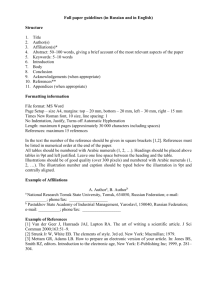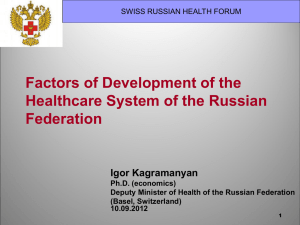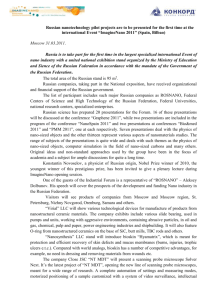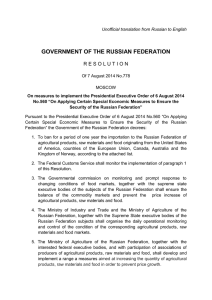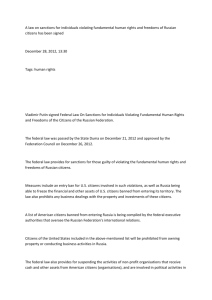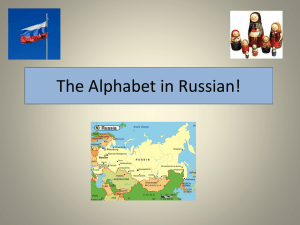WG3_Russian_Law_MSP
advertisement
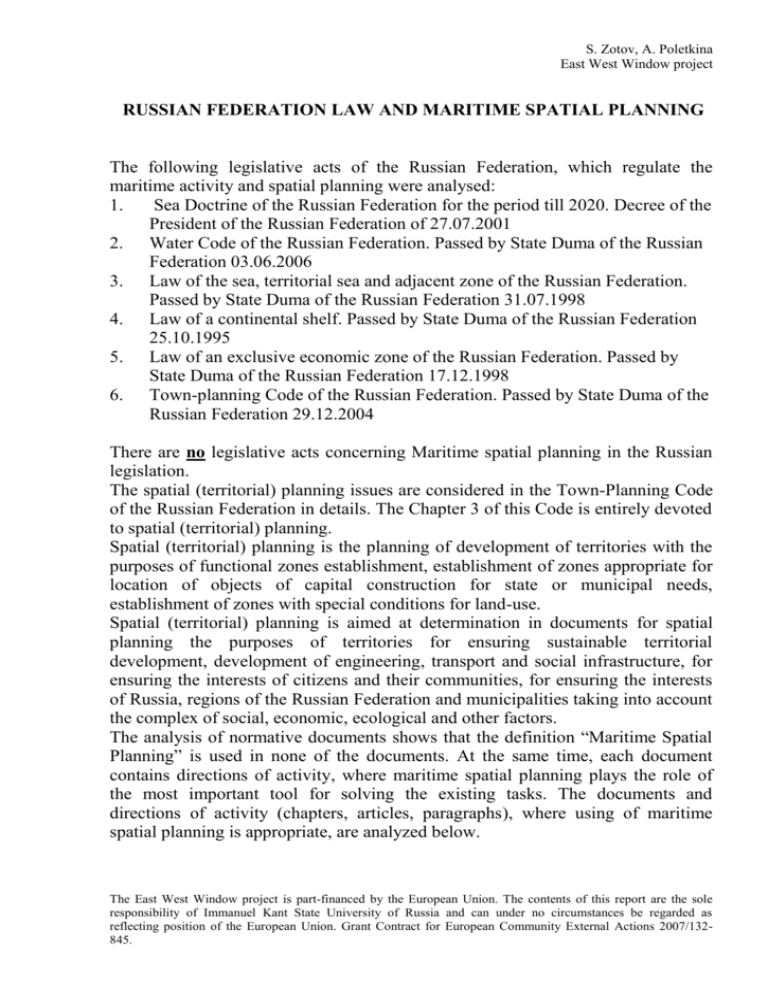
S. Zotov, A. Poletkina East West Window project RUSSIAN FEDERATION LAW AND MARITIME SPATIAL PLANNING The following legislative acts of the Russian Federation, which regulate the maritime activity and spatial planning were analysed: 1. Sea Doctrine of the Russian Federation for the period till 2020. Decree of the President of the Russian Federation of 27.07.2001 2. Water Code of the Russian Federation. Passed by State Duma of the Russian Federation 03.06.2006 3. Law of the sea, territorial sea and adjacent zone of the Russian Federation. Passed by State Duma of the Russian Federation 31.07.1998 4. Law of a continental shelf. Passed by State Duma of the Russian Federation 25.10.1995 5. Law of an exclusive economic zone of the Russian Federation. Passed by State Duma of the Russian Federation 17.12.1998 6. Town-planning Code of the Russian Federation. Passed by State Duma of the Russian Federation 29.12.2004 There are no legislative acts concerning Maritime spatial planning in the Russian legislation. The spatial (territorial) planning issues are considered in the Town-Planning Code of the Russian Federation in details. The Chapter 3 of this Code is entirely devoted to spatial (territorial) planning. Spatial (territorial) planning is the planning of development of territories with the purposes of functional zones establishment, establishment of zones appropriate for location of objects of capital construction for state or municipal needs, establishment of zones with special conditions for land-use. Spatial (territorial) planning is aimed at determination in documents for spatial planning the purposes of territories for ensuring sustainable territorial development, development of engineering, transport and social infrastructure, for ensuring the interests of citizens and their communities, for ensuring the interests of Russia, regions of the Russian Federation and municipalities taking into account the complex of social, economic, ecological and other factors. The analysis of normative documents shows that the definition “Maritime Spatial Planning” is used in none of the documents. At the same time, each document contains directions of activity, where maritime spatial planning plays the role of the most important tool for solving the existing tasks. The documents and directions of activity (chapters, articles, paragraphs), where using of maritime spatial planning is appropriate, are analyzed below. The East West Window project is part-financed by the European Union. The contents of this report are the sole responsibility of Immanuel Kant State University of Russia and can under no circumstances be regarded as reflecting position of the European Union. Grant Contract for European Community External Actions 2007/132845. 2 Sea Doctrine of the Russian Federation for the period till 2020 Chapter 3. National marine policy content Paragraph 2. Regional strategies of national marine policy At the Baltic Sea: development of costal-port infrastructure, renewal of both merchant and mixed (river and sea) vessels; creation of conditions for sustainable economic co-operation with Baltic Sea region countries, rational joint use of marine natural resources, establishing of universal character for confidence measures within all spheres of sea use. Water Code of the Russian Federation Chapter 4. Management in the sphere of marine resources use and preservation Article 28. Basin districts Basin districts are the main units for the management in the sphere of maintenance and preservation of sea objects and consist of river basins and underground water objects and seas connected with them. There are 20 basin districts in Russia, including the Baltic Sea basin district. Article 30. State monitoring of water objects. Article 33. Schemes of comprehensive maintenance and preservation of water objects The schemes include systematic materials dealing with the state of water objects and their use as well being the basis for water and economic activities in the sphere of water objects preservation. Law of the sea, territorial sea and adjacent zone of the Russian Federation Territorial sea is a sea-belt of 12 nautical miles joining land territory or inland sea waters. Chapter 5. Protection and preservation of marine environment and natural resources of inland sea waters and territorial sea Article 34. State environmental expertise of economic and other activities in inland sea waters and territorial sea Article 35. State environmental control of the state of inland sea waters and territorial sea Article 36. State environmental monitoring of the state of inland sea waters and territorial sea Law of a continental shelf Chapter VI. Protection and preservation of mineral and living resources, buried waste and other materials. Atricle 31. State environmental expertise on a continental shelf 3 Article 32. State environmental control on a continental shelf Article 34. Burial of waste and other materials on a continental shelf Law of an exclusive economic zone of the Russian Federation Chapter 5. Protection and preservation of sea environment Article 27. State environmental expertise of economic and other activities in an exclusive economic zone Article 28. State environmental control in an exclusive economic zone Article 29. State monitoring of the marine environment in an exclusive economic zone There are different governmental departments in the Russian Federation which are responsible for implementation of directions of maritime activities provided in the normative documents mentioned above. They are: the Ministry of Natural Resources, The Ministry of Transport, Federal Service of Russia for hydrometeorology and monitoring of the environment, and the Fisheries Agency. The coordination of issues connected with maritime activity is being implemented on the level of the Chairman of the Government of the Russian Federation and his deputies.
